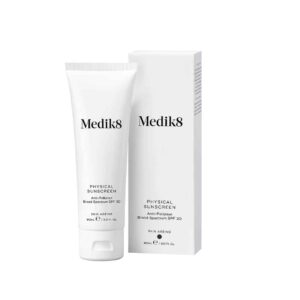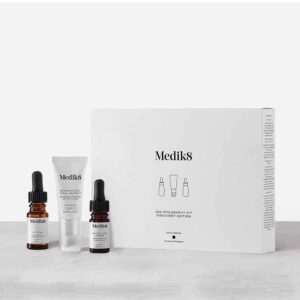The importance of sun protection before and during the summer
We started to enjoy the hot days, the first rays of sunshine we longed for, the desire for a beach, pool or walks in the mountains. In any case, the sun and the good weather invite us to go outside. But despite the urge to do activities in the sun, we must take into account the risks and dangers we face if we do not take the proper precautions. And not just on the days we have categorized as the summer or hot months.
The sun, its positive and negative effects
Sunbathing or sunbathing is not bad, as long as we take the right measures and protections. One of the big mistakes and, unfortunately, very common, is to think that it is not necessary to have the habit of applying sunscreen in the seasons outside the summer. And it is that the solar radiation attacks our skin throughout the year, and the fact that during the winter months the clothes cover most of our body, affects us the parts that are exposed.
Blue light:
The blue light is the one emitted by the lamps and the LED screens; such as plasma TV screens, computers, tablets, smartphones, etc.
It is capable of producing erythema in individuals of phototype I-III (lighter skin, which burns more easily and can tan) and unwanted pigmentation in phototypes IV-VI (spots on darker skin, which tan with easily and rarely burn). It has also been discovered that blue light is capable of generating oxidative stress on the skin, so it could be related to photoaging, with the consequent generation of free radicals that cause cell dysfunction.
Blue light could explain the cases of worsening melasma and post-inflammatory pigmentation, currently there are sunscreens that have begun to use visible light filters (you see them as HEVL on the packaging).
Infrared:
Infrared rays have been a great discovery, with multiple applications, and very useful in different fields, such as in cosmetic medicine to eliminate wrinkles, cellulite, stretch marks, etc., however, they also affect us when they reach the skin. , and not in a positive way. In this sense, it must be said that they are able to oxidize us, to make us age and to modify our DNA. They can also cause cancer. Another bad news is that it is one of the main sources of sunlight. That is, we are exposed to IR-A (as scientists call the most harmful infrared) when we lie on the beach to sunbathe.
UVA rays. They cause damage to the deeper layers of the skin
UVA rays have an action that affects us all year round, even on cloudy days, and represent the 95% of ultraviolet rays that touch the Earth's surface. In addition, they have the ability to penetrate the clouds, the glass and the epidermis. They are responsible for photoaging, sun intolerance, pigmentation disorders or the development of skin cancer.
Direct UVA rays from the sun usually do not cause burns. The long waves of UVA rays, however, penetrate deeper into the lower layers of the skin, where they produce tanning. At the same time, they damage the connective tissue under the epidermis, causing the skin to lose its tone, what we know as premature aging, and wrinkles are the consequence.
Recent studies conclude that a high concentration of UVA rays can cause skin cancer, so we can say that it is responsible for increasing its incidence.
UVB rays. They are responsible for tanning and are responsible for sunburn
Short waves of the sun's UVB radiation are mostly intercepted by the ozone layer. The weakening of the ozone layer in recent years, however, has led to an increase in the number of UVB rays reaching the earth. The powerful UVB radiation initially causes the skin's most obvious protective reaction to the sun. It penetrates the upper layers of the epidermis and tans them quickly. Pigments (melanin) are formed by pigment cells located at the junction of the dermis with the epidermis, and are yielded to keratinocytes, cells that form the epidermis, the most superficial layer of the skin and color it visibly.
With an excessive dose of UVB, the skin becomes red and inflamed, which we will later determine as a sunburn. This is a serious alarm signal sent by skin cells. It is now up to the cell repair system itself to eradicate the damage. The more frequent and intense the exposure of the skin to the sun, the more severe the damage. In addition, it increases the risk of repair processes running out and not working properly. In the long run, this can lead to alterations in genetic material, chronic skin lesions, and can lead to early stages of cancer and the development of skin cancer.
As for the affectation, we can say:
Positive effects:
- It stimulates the synthesis of vitamin D, very important for example to prevent osteoporosis.
- It generates well-being, stimulating the feeling of health in our brain.
- It benefits skin conditions such as psoriasis or atopic dermatitis.
- Stimulates the synthesis of brain neurotransmitters that generate positive reactions in the mood.
Adverse effects:
- UVA rays age skin cells and can damage the DNA of these cells. These rays are associated with long-term skin damage such as wrinkles, but are also thought to play a role in some types of cancer. Most tanning beds emit large amounts of UVA which have been found to increase the risk of skin cancer.
- UVB rays have a little more energy than UVA rays. These rays can directly damage the DNA of skin cells, and are the main rays that cause sunburn. They are also thought to cause most skin cancers.
- UVC rays have more energy than other types of UV rays, but they do not penetrate our atmosphere and are not in sunlight. They are not usually a cause of skin cancer.
Factors influencing the intensity of sun exposure
There are several factors to keep in mind when it comes to sun exposure, and we often don't consider it important:
- Altitude: As we are higher than sea level, the intensity of the radiation is higher. In numbers, we can say that for every 300 meters we climb, the radiation increases by 4%.
- Obliqueness: Refers to the intensity according to the angle of incidence on the surface of the earth.
- Latitude: The closer we get to the tropics, the more vertical the more intense the roots are.
- Season: Depending on the season we are in, the way the sun shines is different.
- Climate: Although clouds and moisture absorb radiation, on cloudy days we must also protect ourselves, because even if they do not arrive with the same intensity, they do arrive.
- Surface: Depending on the surface we step on, it absorbs and reflects radiation differently.
- Pollution: Although it may seem untrue, pollution absorbs solar radiation.
- Ozone layer: With the reduction of the ozone layer increases the radiation that reaches us.
What is FPS, the Sun Protection Factor?
It is the factor that we must multiply by our skin sensitivity. According to our phototype, which depends on the type of skin we have, from lightest to darkest, and will tell us how long we can expose ourselves to the sun without the risk of sunburn. It is important for each person to be clear about their phototype, and to avoid risks that could be very harmful to our skin.
This concept is very important for those who have skin problems or, especially, in the case of boys and girls, and use protective factors especially indicated for children.
In Nutrireset by Eva Grau, you will find the most suitable products to enjoy sunbathing with the maximum guarantees and security. Let Eva advise you professionally and feel more secure when exposed to the rays of the star king.


